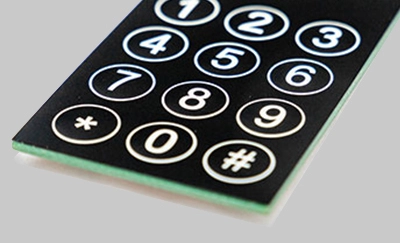
A membrane keypad is typically made from a combination of materials. The top layer, or the surface of the keypad that you interact with, is often made from polyester (PET) or polycarbonate (PC). These materials are preferred because they are durable, flexible, and can withstand repeated use and pressure. The top layer is typically printed with conductive ink or coated with a conductive material to create the contact points or buttons.
Beneath the top layer, there is a spacer layer made from materials such as silicone or rubber. The spacer layer provides cushioning and helps to create a tactile response when the buttons are pressed. It also separates the top and bottom circuit layers of the membrane switch panel.
The bottom layer of the membrane keypad consists of a circuit layer, which is usually made from polyester or polyimide film. This layer contains the electrical traces and contacts that are used to register button presses. When a button is pressed, it makes contact with the circuit layer, completing an electrical circuit and sending a signal to the device or system it is connected to.
Overall, the materials used in a membrane keypad are chosen by membrane keypad manufacturer for their durability, flexibility, and electrical conductivity to ensure reliable and long-lasting performance.
You may also be interested in the membrane switches offered by Niceone Tech:
Explore our range of membrane keypads and switches today for an unmatched user interface experience.